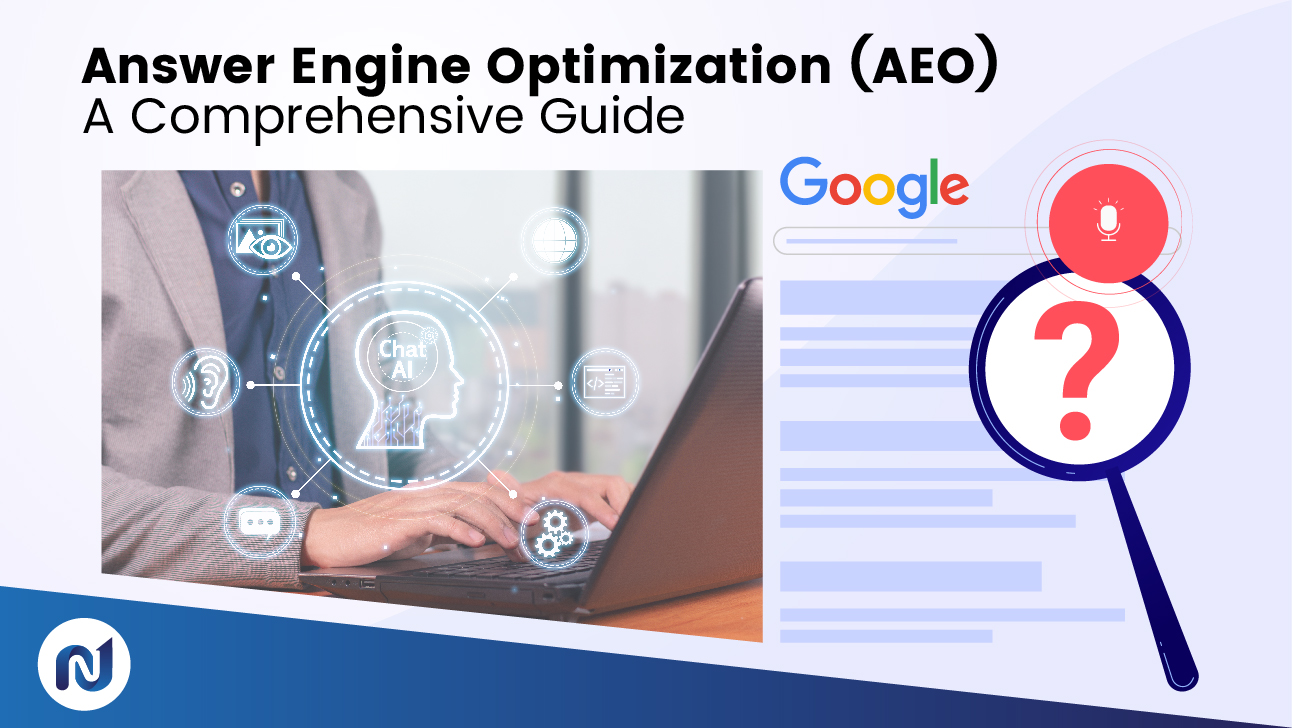
Welcome to the world of Answer Engine Optimization (AEO), a pivotal component in today’s AI-centric digital marketing landscape. As artificial intelligence (AI) reshapes how we interact with search engines, AEO emerges as a crucial strategy for businesses to stay visible and relevant. This guide delves into AEO, exploring its impact on search habits, and offers actionable insights for digital marketers, SMB owners, and tech enthusiasts.
Highlights
- Optimizing for AI Search: AEO equips content for maximum visibility and relevance in AI-driven search environments like ChatGPT, Bing Chat, and Google Bard.
- Beyond Keywords: Focus on understanding and answering user questions rather than chasing keywords.
- Direct Answers: Craft precise, direct responses to user queries for improved interaction.
- Content Optimization: Master content for voice searches and AI assistants to thrive in the evolving digital landscape.
- User Intent Alignment: Align content with informational, navigational, transactional, and commercial intents to boost engagement.
Table of Contents
- Understanding AEO and Its Evolution
- Voice Searches: Transforming Search Engine Interactions
- AI-Driven Search Assistants: A New Era in Online Search
- Content Optimization for AEO
- Understanding and Catering to Search Intent
- Technical Optimization in AEO
- The Role of Featured Snippets and Knowledge Panels
- Building Credibility and Authority for AEO
- Adapting SEO Strategies for AEO
- Future Trends and Predictions
- Conclusion: AEO at Numero Uno Web Solutions
Understanding AEO and Its Evolution
What Is AEO?
Answer Engine Optimization (AEO) is a vital subset of SEO, essential in today’s AI-driven digital marketing. It involves refining online content to precisely answer specific user queries. With AI technologies like OpenAI’s ChatGPT, Google Bard, and Microsoft’s Bing Chat reshaping search interactions, AEO focuses on crafting highly relevant, direct responses. This sets AEO apart from traditional SEO, which broadly targets visibility and ranking on search engine results pages (SERPs).
What Can AEO Do for Your Business?
Implementing AEO strategies can be transformative for businesses. It offers a direct pathway to enhanced online visibility and user engagement. By accurately answering specific queries, AEO positions your content as a primary resource, building trust and authority with your audience. This targeted approach not only increases the likelihood of your content being featured prominently in search results but also improves user experience, leading to higher engagement and conversion rates. Essentially, AEO can elevate your brand’s digital presence, aligning it closely with the evolving needs and behaviours of modern internet users.
The Emergence of AEO
The origin of AEO can be traced back to the evolution of search engines themselves. Initially, search engines were designed to crawl, index, and rank websites based on keywords and backlinks. However, with advancements in AI and natural language processing (NLP), search engines have become more sophisticated. They are now capable of understanding the intent behind users’ queries and are delivering answers, not just links. AEO capitalizes on this evolution, shifting from link-based responses to providing direct answers.
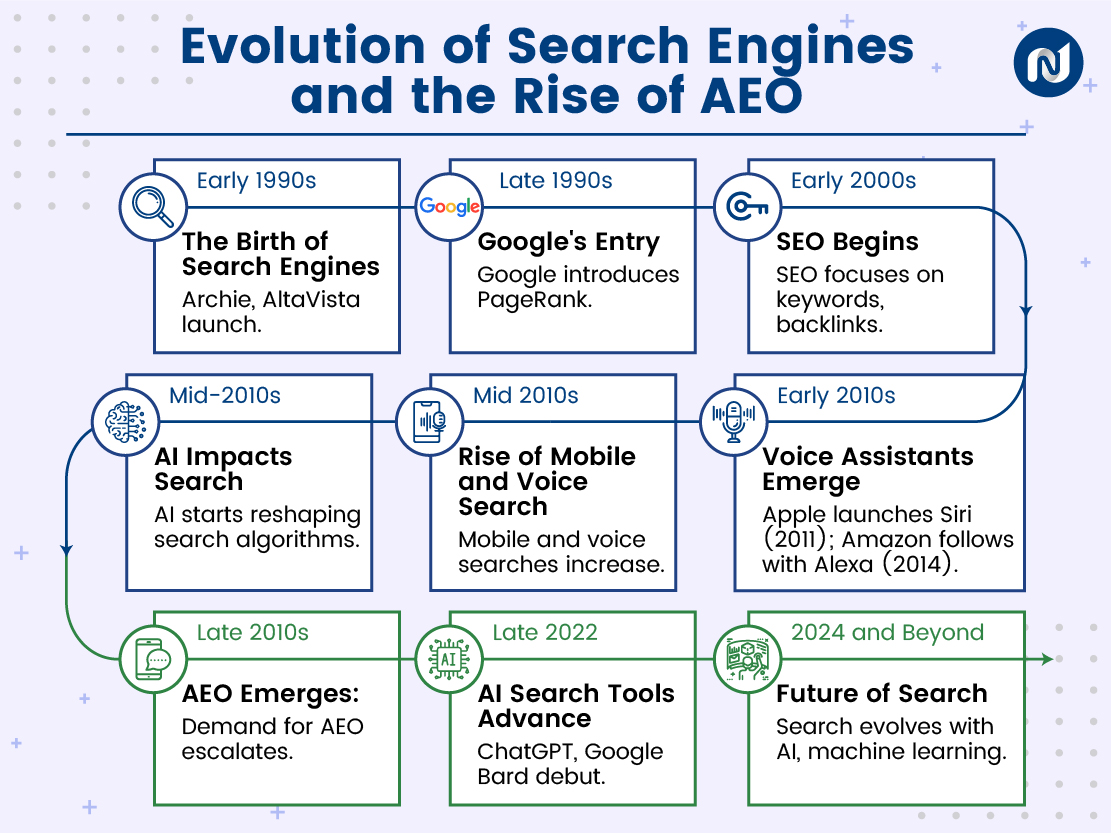
AEO vs. Traditional SEO
The transition from SEO to AEO marks a significant change in how content is optimized for search engines. Traditional SEO techniques often involve optimizing for a broad range of keywords to improve the chances of ranking higher on SERPs. However, AEO is more nuanced. It requires understanding the specific questions your target audience is asking and then tailoring your content to provide the most accurate and direct answers to those questions.
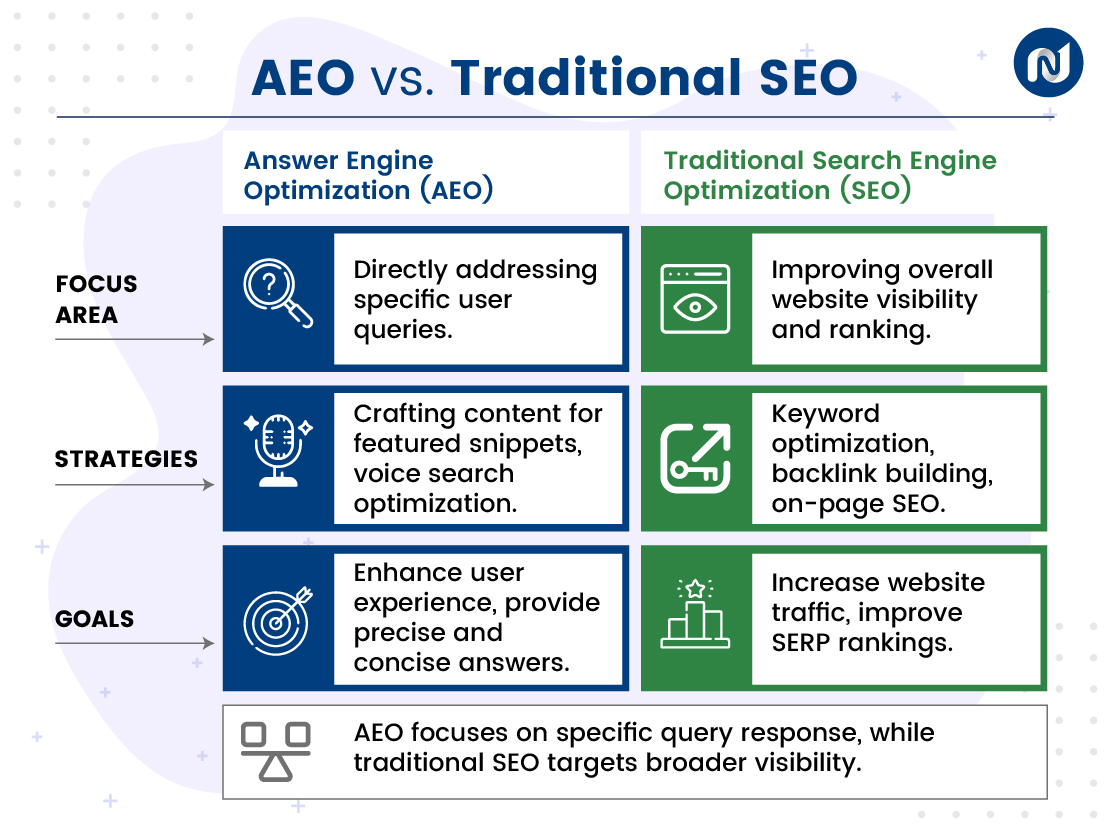
The Importance of AEO
In an era where search engines, particularly Google, increasingly prioritize direct answers, the alignment of content with user intent is crucial. This shift is evident in the rise of zero-click search results, where answers are displayed directly on Google’s results page, negating the need for further clicks. For businesses aiming to maintain online relevance and visibility, AEO is indispensable. It ensures that content is not just visible but finely tuned to the searcher’s immediate needs, significantly enhancing user experience and satisfaction.
Voice Searches: Transforming Search Engine Interactions
The Rise of Voice Search
Voice search technology has fundamentally altered the landscape of online searches. This shift is largely attributed to the widespread adoption of voice-activated devices like smartphones, smart speakers (e.g., Amazon Echo, Google Home), and voice-enabled virtual assistants (e.g., Siri, Alexa). These tools have made voice search accessible and a preferred mode of online interaction for many users.
Understanding Voice Search Behaviour
The nature of voice search is inherently different from traditional text-based queries. Users tend to use natural, conversational language, often in the form of complete sentences or questions. For instance, while a text search might be “weather New York,” a voice search is more likely to be “What is the weather like in New York today?” This shift towards full-sentence, question-based queries has significant implications for AEO.
Optimizing for Voice Search
To optimize for voice search, content needs to be more conversational and directly answer the questions users are likely to ask. This often involves targeting long-tail keywords—those specific phrases that are three or more words long, less competitive, yet highly targeted. Additionally, structuring content in a question-and-answer format can improve the chances of being picked up by voice search algorithms.
AI-Driven Search Assistants: A New Era in Online Search
The Emergence of AI in Search
Integrating AI into search engines has ushered in a new era of search capabilities. Advanced AI algorithms, as seen in tools like ChatGPT, Google SGE (Search Generative Experience), Google Bard, and Microsoft’s Bing Chat, are not just interpreting queries but understanding the context and intent behind them. This level of sophistication marks a significant evolution from keyword-based to intent-based search.
The Role of AI Search Assistants
AI-driven search assistants have redefined the expectations of users from search engines. These tools provide more than a list of links; they offer direct answers, summaries, and even conversational interactions. For instance, a query about “best practices for content marketing” may yield a concise summary of key strategies, directly in the search results, without the need to click through to a website.
Content Optimization for AEO
Crafting User-Friendly Content
For answer engine optimization, the content that precisely addresses specific user questions reigns supreme. This specificity involves a deep understanding of your audience’s most common queries within your niche and creating content that directly answers these questions in a clear and concise manner.
Here are some strategies for crafting user-focused content:
- Keyword Research: Utilize tools like Google Keyword Planner or SEMrush to identify what your target audience is searching for. Look for question-based keywords that are relevant to your niche.
- Answering Queries Through Content: Once you have identified common questions, create content that directly answers these. For instance, a dental clinic in the GTA might find a common query like “how to prevent tooth decay.” Creating a blog post titled “5 Essential Tips to Prevent Tooth Decay” directly addresses this query.
- Use of Rich Media: Incorporate varied content formats like videos, infographics, and podcasts to answer questions. A how-to video on a common query can be more engaging and informative.
- Regular Content Updates: Regularly update your content to ensure it remains relevant and continues to answer the most current queries of your audience.
Leveraging the “About Us” Section
The “About Us” page is often the first introduction of your business to potential customers. It should not only tell your story but also connect with your audience’s needs and expectations.
- Highlighting Expertise and Values: Share your expertise, experience, and values. For example, a GTA-based eco-friendly product store can highlight its commitment to sustainability and how it sources products.
- Local Connection: Emphasize your connection to the local area. Mentioning your involvement in the GTA community can create a stronger local connection.
Maximizing FAQs for AEO
FAQ sections are incredibly effective for AEO. They serve as a direct and structured response to the most common questions your customers have.
- Addressing Common Questions: Include questions that you frequently encounter from your customers. For a Toronto law firm, this might include “What should I expect during my first legal consultation?”
- Clear and Concise Answers: Provide straightforward and easy-to-understand answers. This not only helps in AEO but also improves the overall user experience.
- Incorporating Keywords: Strategically use relevant keywords in your FAQs. This can increase the chances of your content appearing in answer boxes or featured snippets.
- Updating FAQs: Regularly update your FAQs to reflect the latest questions and trends in your industry.
Incorporating Feedback for Content Improvement
Encourage and utilize customer feedback to continuously improve and update your content. This ensures your content remains relevant and aligned with your audience’s evolving needs.
Understanding and Catering to Search Intent
The Essence of Search Intent
In the context of AEO, understanding search intent is pivotal. It’s about deciphering why a user is conducting a specific search: Are they looking for information? Do they intend to make a purchase? Are they seeking a particular service? The content you create should align seamlessly with these varied intents. This alignment is not just about answering queries but about anticipating and satisfying the underlying needs of those queries.
Types of Search Intent
- Informational Intent: Here, users are seeking information or answers. For instance, a query like “What are the symptoms of a common cold?” indicates a need for information.
- Navigational Intent: Users with this intent are trying to reach a specific website or page. For example, “Toronto Public Library login” is a navigational query.
- Transactional Intent: When a user intends to complete a transaction, such as making a purchase. A query like “buy winter tires in Toronto” is transactional.
- Commercial Investigation: Users are considering a purchase and are researching options. For instance, “best Italian restaurants in GTA” suggests a user looking for dining options.
Catering to Different Search Intent
- For Informational Intent: Create content that educates and informs. Blog posts, FAQs, and how-to guides are excellent for this. For example, a gardening store in Toronto might publish a blog post titled “Beginner’s Guide to Gardening in Toronto” to address informational queries about local gardening.
- For Navigational Intent: Ensure your website is optimized for branded keywords and that your site structure is intuitive. For instance, if you run a fitness center in Toronto, ensure that searches for “Toronto Fitness Center schedule” lead directly to your class schedule page.
- For Transactional Intent: Focus on product or service pages with clear, persuasive information, and strong calls-to-action (CTAs). For a GTA-based online retailer, product pages should be optimized with phrases like “buy online in Toronto” and include detailed product information, pricing, and easy purchase options.
- For Commercial Investigation: Provide comparative content, reviews, or detailed service descriptions. A real estate agency in the GTA could create content like “Top Neighborhoods in Toronto for Families” to cater to users who are in the decision-making phase of purchasing a property.
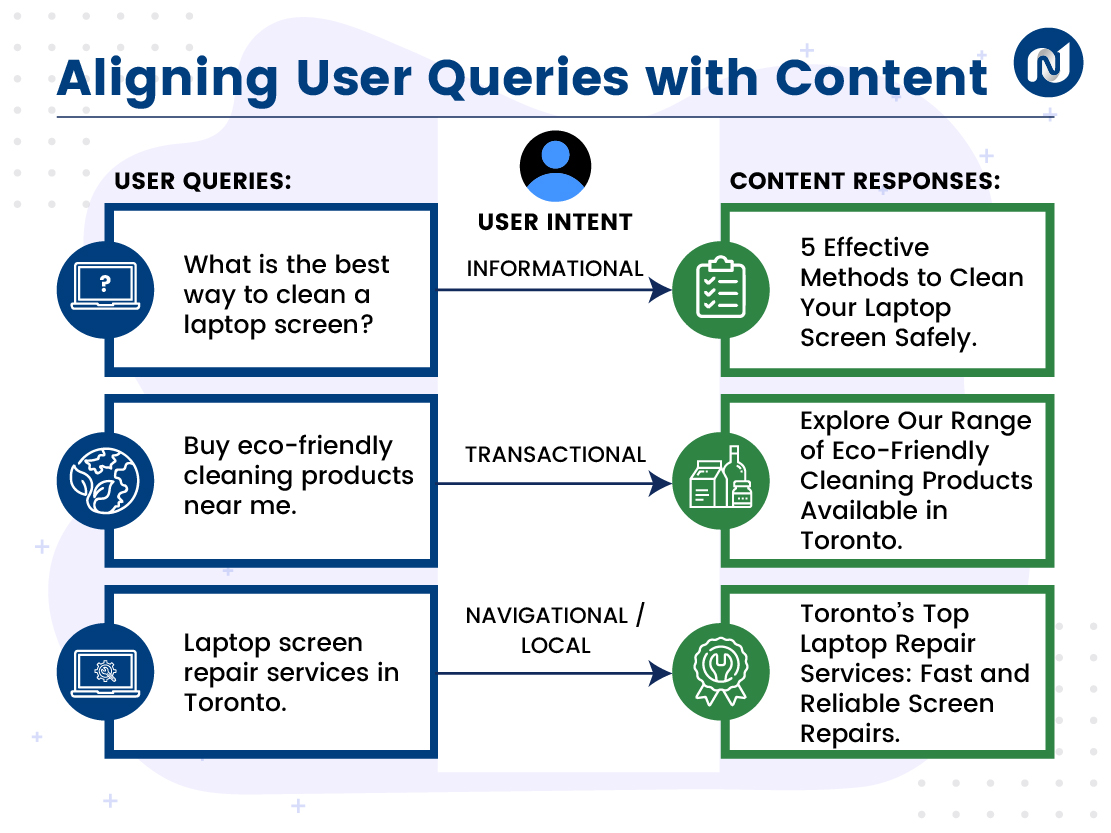
Utilizing Tools to Understand Intent
Leverage tools like Google Analytics, Search Console, and customer feedback to gain insights into what your audience is seeking. Understanding the patterns in these queries can help tailor your content strategy effectively.
The Impact of Correctly Addressing Search Intent
By aligning your content with the user’s search intent, you not only enhance your site’s relevance and authority in search engine results but also improve user experience. This alignment leads to higher engagement, increased trust, and, ultimately, better conversion rates.
Technical Optimization in AEO
The Role of Technical Optimization in AEO
Technical optimization forms the backbone of effective AEO. It’s about fine-tuning the backend aspects of your website to enhance its performance and visibility in search engines. This technical finesse is crucial because even the best content can falter if the website on which it resides is not technically sound.
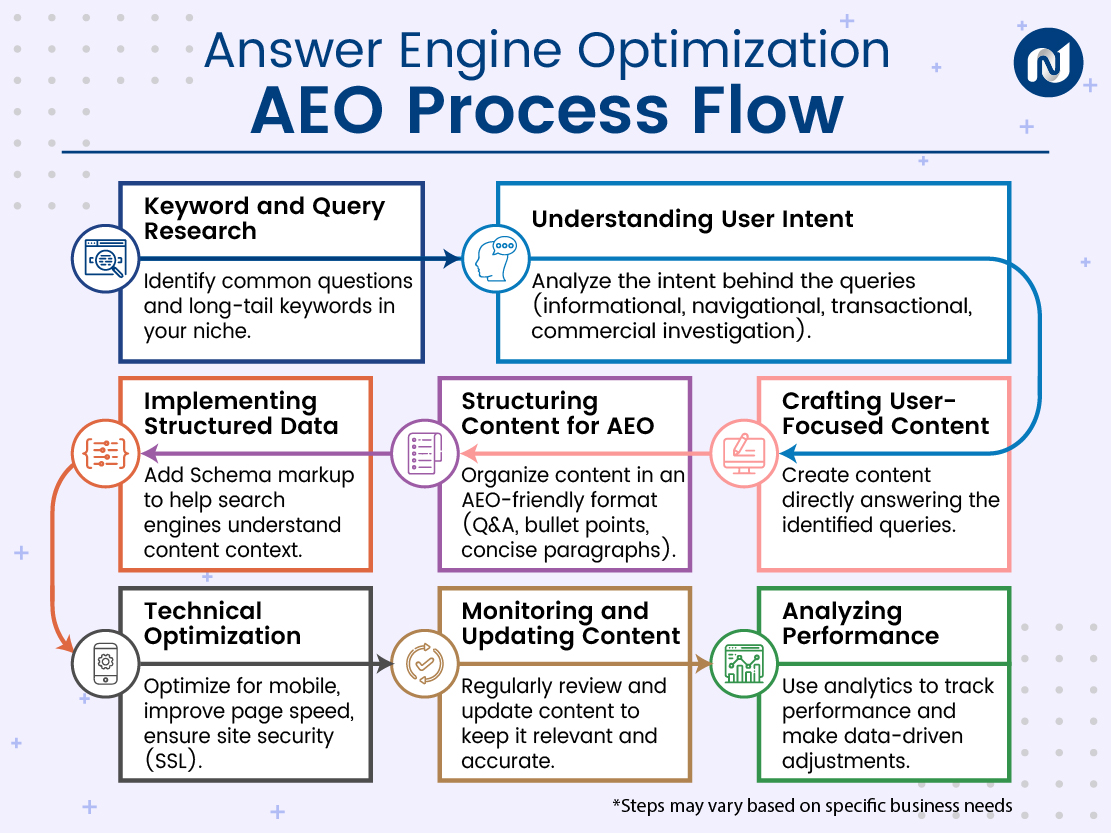
Key Areas of Technical Optimization
- Page Speed: Fast-loading pages are essential for a good user experience. Search engines favour websites that load quickly. Use tools like Google PageSpeed Insights to analyze your website’s speed. Optimize images, leverage browser caching, and minimize redirects to improve loading times.
- Mobile-Friendliness: With an increasing number of searches conducted on mobile devices, having a mobile-friendly website is indispensable. Implement responsive web design to ensure your site is easily navigable and visually appealing on all devices. Use Google’s Mobile-Friendly Test tool to check your site’s performance on mobile platforms.
- Structured Data and Schema Markup: Structured data and schema markup help search engines understand the context of your content. This is particularly important for AI-driven search engines which rely on this data to present rich results like snippets or voice search responses. Implement schema markup for product information, reviews, and business details. This makes it easier for search engines to parse and display your content in an informative and appealing manner.
- Secure Sockets Layer (SSL): SSL ensures a secure connection, a ranking factor for most search engines. It builds trust with your visitors, an essential aspect of maintaining a professional online presence.
- Clean and Structured URL: Use URLs that are simple, clean, and descriptive. Optimize your URLs by including keywords where appropriate but avoid overstuffing.
- Optimizing Site Architecture: Ensure your site architecture is logical and intuitive and easy to navigate. A well-structured website aids search engines in crawling and indexing your content more effectively.
- Error Management: Handle 404s by regularly checking for and fixing broken links. Implementing user-friendly 404 error pages can improve the user experience.
Regular Audits and Updates
Conduct regular technical SEO audits to identify and rectify issues that could hinder your website’s performance. Stay updated with the latest trends and algorithm updates to ensure your website remains compliant and optimized for the best AEO results.
The Role of Featured Snippets and Knowledge Panels
Understanding Featured Snippets and Knowledge Panels
Google’s featured snippets and knowledge panels are prime real estate in AEO. Optimizing content to feature in these formats enhances visibility and authority. These elements appear prominently on search engine results pages (SERPs), offering concise, direct answers to user queries or comprehensive information about a topic, entity, or business.
- Featured Snippets: Featured snippets are selected search results that appear at the top of Google’s SERPs, designed to answer the user’s question directly. They come in various formats, including paragraphs, lists, or tables. Appearing in a featured snippet can significantly increase your content’s visibility and click-through rate. It positions your site as an authoritative source on the topic.
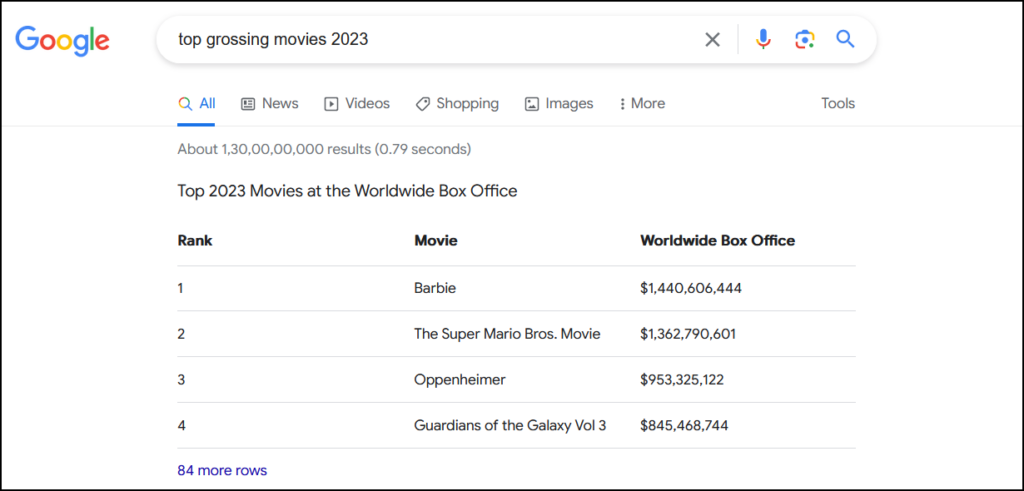
- Knowledge Panels: Knowledge panels are box-like structures that appear on the right side of SERPs, providing a summary of key information about a subject, such as a business, person, place, or thing. For local businesses, appearing in knowledge panels can boost credibility and provide potential customers with essential information like location, hours of operation, and customer reviews.
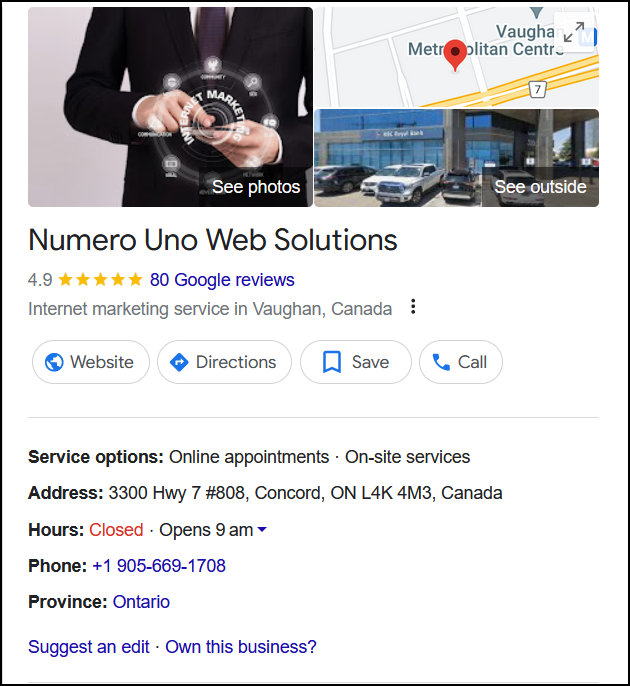
Strategies Targeting Featured Snippets
- Identify Common Questions: Use keyword research tools to find common questions in your niche. Craft content that directly answers these questions.
- Structured Content: Organize your content in a clear, logical format. Use headings, bullet points, and tables where appropriate to increase the chances of being featured.
- Provide Clear Answers: Start your content with a concise summary that answers the target question directly. This increases the likelihood of it being picked up as a featured snippet.
Strategies for Leveraging Knowledge Panels
- Google Business Profile: Ensure your Google Business Profile is complete and up to date. This is crucial for businesses to appear in knowledge panels.
- Consistent Information: Maintain consistency in your business details across the web. This includes your name, address, phone number, and website.
- Encourage Reviews: Positive reviews can influence your presence in knowledge panels. Encourage satisfied customers to leave reviews.
- Use Schema Markup: Implement schema markup for your business. This helps Google understand your business’s context and information, increasing the likelihood of appearing in knowledge panels.
Regular Monitoring and Updating
- Monitoring SERP Changes: Keep track by regularly monitor changes in SERPs for your target keywords. Understand how featured snippets and knowledge panels for these keywords evolve.
- Refreshing Content: Keep your content fresh and updated. Regular updates signal to search engines that your content is current and relevant.
Building Credibility and Authority for AEO
Credibility is key in AEO. Building a reputation through positive reviews, authoritative backlinks, and media mentions can boost your chances of being featured as a top answer.
The Importance of Credibility in AEO
Credibility isn’t just a buzzword; it’s a fundamental requirement for AEO. Establishing your website or business as a credible and authoritative source is crucial for ensuring your answers are considered worthy by search engines for top placements.
Strategies for Enhancing Credibility
- Garnering Positive Reviews: Reviews act as social proof, enhancing credibility in the eyes of both search engines and potential customers. Encourage satisfied customers to leave positive reviews on platforms like Google Business Profile, Yelp, or industry-specific review sites.
- Building Authoritative Backlinks: Each quality backlink to your site is like an endorsement, increasing your site’s authority. Guest blogging, collaborating with influencers, and creating shareable content are effective ways to earn backlinks.
- Leveraging Media Mentions: Mentions in reputable media can significantly boost your credibility. Engage in newsworthy business activities, press releases, and media outreach to get mentioned in news articles and industry publications.
Adapting SEO Strategies for AEO
The Complementary Nature of SEO and AEO
While SEO and AEO are distinct in their focus—SEO aiming at improving site ranking and AEO at providing precise answers—they are synergistic. A strategy that integrates both can enhance overall digital presence and effectiveness.
Integrating AEO into SEO
- Content Optimization: While crafting content, focus on both keyword optimization (for SEO) and directly answering user queries (for AEO). For example, if you’re optimizing for a keyword like “top Toronto real estate agents,” also include direct answers to potential user questions like “Why choose a Toronto real estate agent for buying property?”
- Technical SEO in AEO: The technical groundwork for SEO—such as mobile optimization, page speed, and structured data—is equally beneficial for AEO. Ensure that your website’s technical SEO is solid to support both SEO and AEO strategies.
- Leveraging SERP Features: Aim to appear in SERP features like featured snippets and knowledge panels (key in AEO) which also boost organic SEO visibility. Optimize content to answer questions concisely and use schema markup for better chances of appearing in these features.
- Unified Keyword Strategy: Develop a keyword strategy that accounts for both traditional keyword usage and the natural language typically used in queries. Blend long-tail, conversational keywords for AEO with broader keywords for traditional SEO.
Future Trends and Predictions
The Evolving Role of AI in AEO
As we look to the future, the role of AI in search engines and AEO is poised to expand significantly. The integration of more sophisticated AI and machine learning algorithms will lead to even more intuitive and contextually aware search capabilities. This evolution will necessitate a corresponding shift in how content is optimized for search engines.
Predictions for AEO’s Future
- Voice Search Proliferation: The growing prevalence of voice-activated devices will make voice search optimization an even more crucial part of AEO strategies.
- AI-Powered Personalization: Future search engines may offer highly personalized search results based on user behaviour, preferences, and history, further emphasizing the need for content that aligns closely with user intent.
- Increased Importance of Semantic Search: Search engines will likely get better at understanding the nuances of language, making semantic search optimization vital for AEO.
- Interactive and Dynamic Content: We might see a rise in the demand for interactive content that engages users in a more dynamic way, answering queries through tools like calculators, quizzes, and interactive videos.
- Integration of Augmented Reality (AR) and Virtual Reality (VR): As these technologies become more mainstream, they could play a significant role in how users search and interact with content online.
Conclusion: AEO at Numero Uno Web Solutions
As we conclude this guide, it’s important to recognize that AEO is more than just a trend; it’s a pivotal strategy in the evolving landscape of AI-enhanced search. At Numero Uno Web Solutions, our SEO strategies are intricately woven with AEO principles. We focus on delivering content that not only ranks but also directly answers your audience’s queries, providing value and building trust.
By embracing AEO as a key component of your digital marketing strategy, you position your business to stay ahead in a competitive online landscape. As AI continues to shape the future of search, our commitment at Numero Uno Web Solutions is to ensure that your online presence is not only visible but also authoritative and relevant.
Incorporate AEO into your marketing efforts and witness a significant boost in your digital engagement and authority. The future of search is here, and with Numero Uno Web Solutions, you can navigate this future with confidence, harnessing the full potential of AEO to achieve your digital marketing goals.




